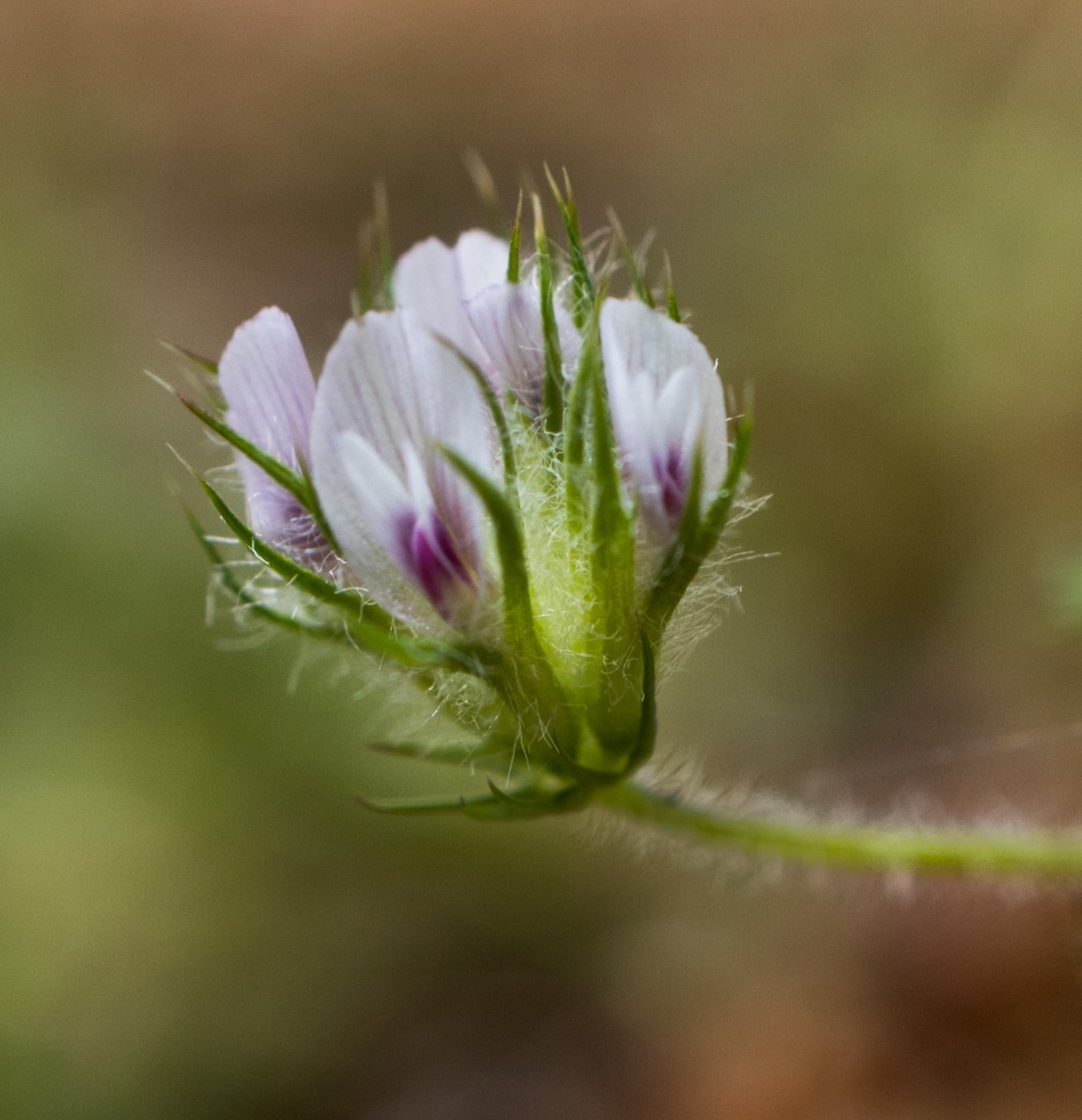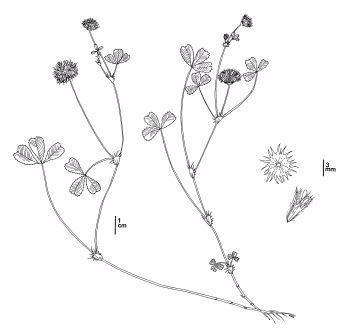(Trifolium trichocalyx)
 Trifolium trichocalyx. Photo by Mariel Boldis.
Trifolium trichocalyx. Photo by Mariel Boldis.
 Trifolium trichocalyx. CDFW Illustration by Mary Ann Showers. (Click to enlarge)
Trifolium trichocalyx. CDFW Illustration by Mary Ann Showers. (Click to enlarge)
Monterey clover is a California endangered plant species, which means that killing or possessing plants is prohibited by the California Endangered Species Act (CESA). The species is also listed as endangered under the federal Endangered Species Act. Monterey clover is a small, low-spreading annual herb of the pea family (Fabaceae) with three small leaflets per leaf, pea-like pink to purple flowers with long hairs on the calyx (the outermost whorl of the flower), and a narrow, fused, and irregularly lobed involucre (a whorl of small leaves beneath calyx). Monterey clover blooms early to late spring in April and May. Monterey clover typically grows in moist depressions in open, moderately disturbed areas of low vegetation cover, sparse litter layer, and low competition along the margins of roads and trails. Generally, Monterey clover is known to germinate in response to both fire and non-fire disturbance. However, additional information is still needed to identify what the appropriate levels of disturbance are required for long-term species’ resiliency.
At the time of this webpage posting, the California Natural Diversity Database reports six natural occurrences of this species that are presumed to still exist. The populations are clustered in two areas: one in the Monterey Peninsula in Monterey County, and the other near Point Arena in Mendocino County. While the soil seedbank appears to be long-lived (± 60 years), no more than 1,000 individuals have ever been documented on the Monterey Peninsula. The species appears to be more abundant in Mendocino County, yet annual population counts continue to drastically vary 50-7,000 plants.
The possibility of extinction is high for this species, due to the low number of individuals, ongoing human activities related to modification or destruction of habitat, altered disturbance regimes, competition, and climate change. All present-day occurrences of Monterey clover are on private lands, and most are protected from development under conservation easements. Undeveloped lands in the plant’s vicinity that are unprotected are vulnerable to future development. Remaining habitat should be maintained, and current populations should be monitored. Surveying potential habitat between Monterey and Mendocino counties may help identify where else the species may occur and provide opportunities for species recovery.
CDFW may issue permits for Monterey clover pursuant to CESA, and you can learn more about the California laws protecting Monterey clover and other California native plants. Populations of Monterey clover occur in CDFW’s Northern Region and Central Region. More information is also available from the U.S. Fish and Wildlife Service Species Profile for Monterey clover U.S. Fish and Wildlife Service Species Profile for Monterey clover.